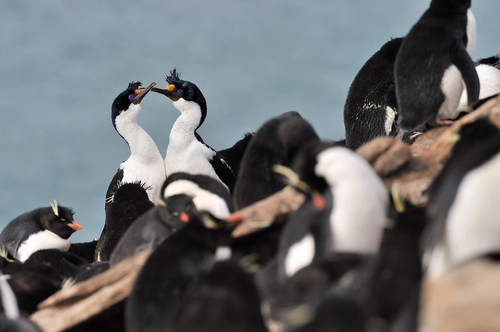Name: Striated Caracara, Johnny Rook, Caracara Austral, Matamico Estriado, Matamico Grande, Tiuque Cordillerano Austral. (Phalcoboenus australis)
Length: 60 cm.
Weight: 1.2 kg
Location: Falklands, Tierra del Fuego.
Conservation status: Near Threatened.
Diet: Carrion, offal, food scraps, insects, worms, lambs, small seabirds, eggs and young of larger seabirds.
Appearance: Eagle-like, dark brown plumage, grey-yellow legs and talons. White tips around neck, back of head, and tips of tail feathers. Yellow patches around bottom of eye and rear of beak. Hooked grey bill.
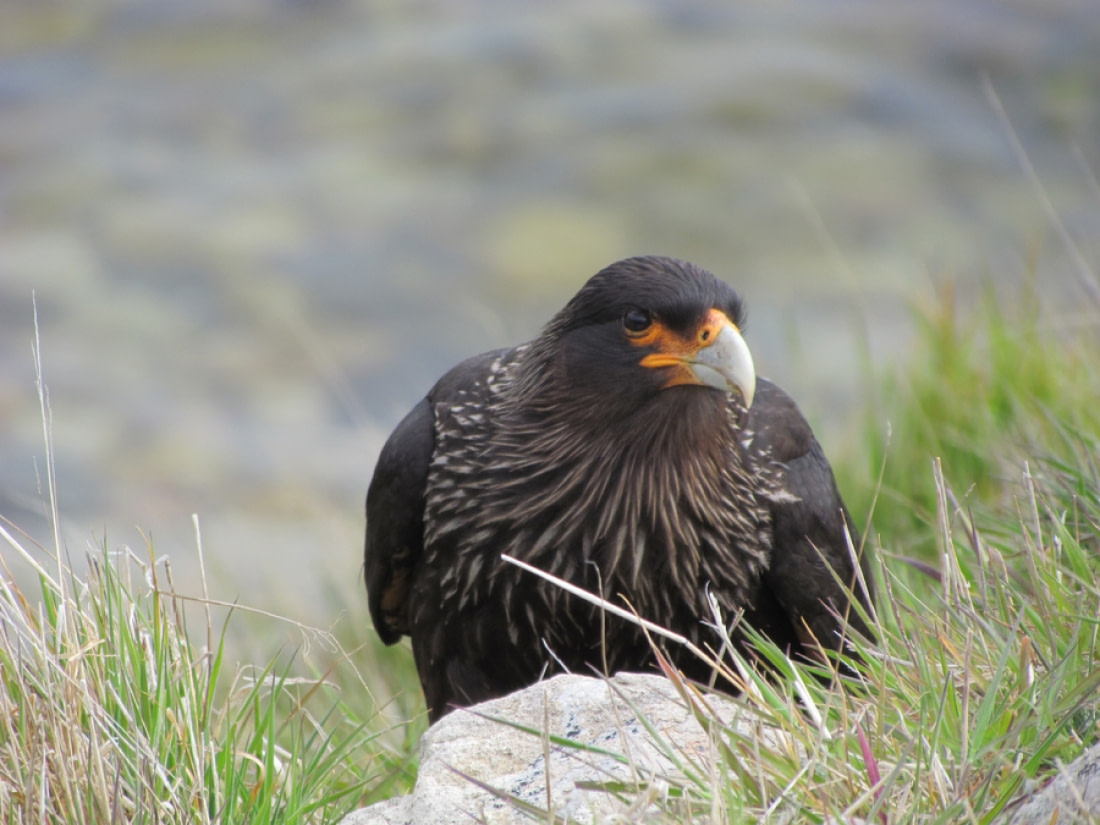
How do Striated Caracaras feed?
Striated Caracaras are opportunistic feeders. They consume young and eggs of seabirds, hunt smaller seabirds, investigate human refuse, eat offal, and scavenge carcasses. They also overturn rocks for food, showcasing their problem-solving abilities.
Are Striated Caracaras social?
They may hunt in flocks of up to 50 individuals.
How fast do Striated Caracaras move?
They are fast fliers, reaching speeds over 60 km per hour.
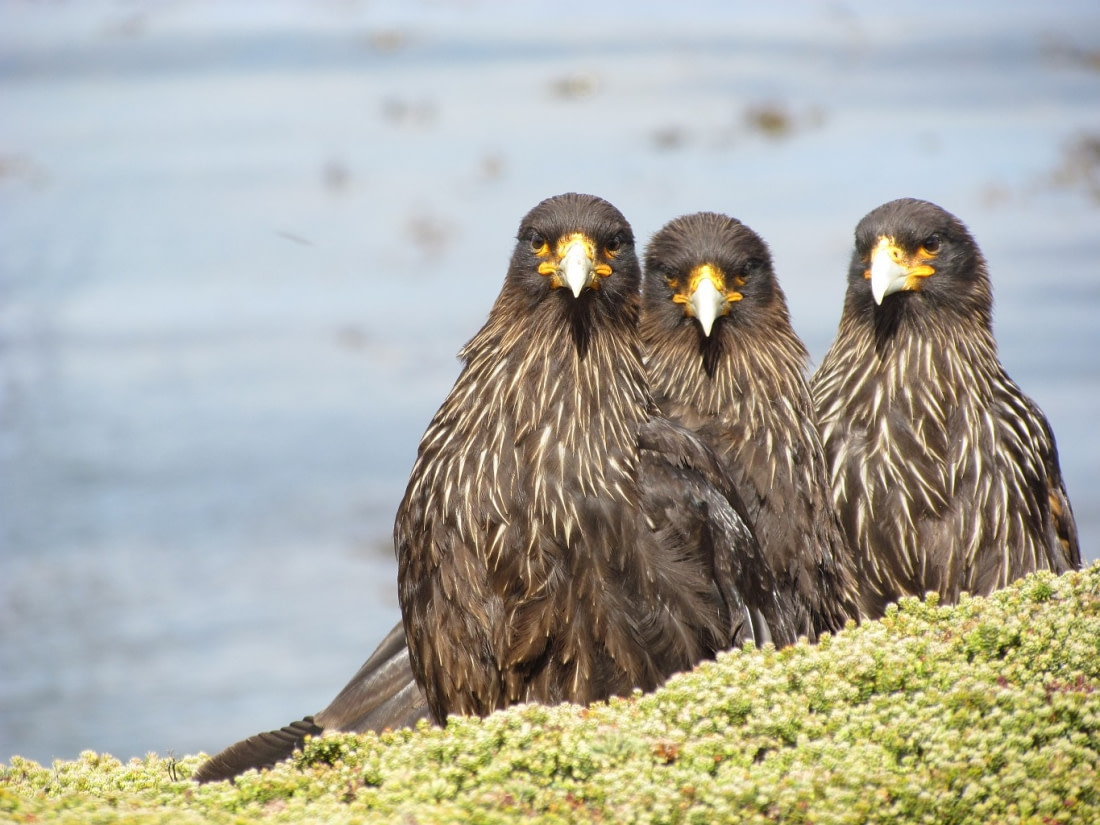
What are Striated Caracara birthing rituals like?
Nests are built on the ground or cliff edges using twigs and vegetation, lined with wool or grass. Breeding occurs from December to February, with females laying up to four eggs. Incubation lasts about a month, timed with the birthing season of prey seabirds. Juveniles are brown and take up to 5 years to reach adult coloring.
How long do Striated Caracaras live?
Wild lifespan is unknown, but in captivity, they can live over 30 years.
How many Striated Caracaras are there today?
There are about 500 breeding pairs in the Falklands, with an estimated total of up to 4,000 individuals.
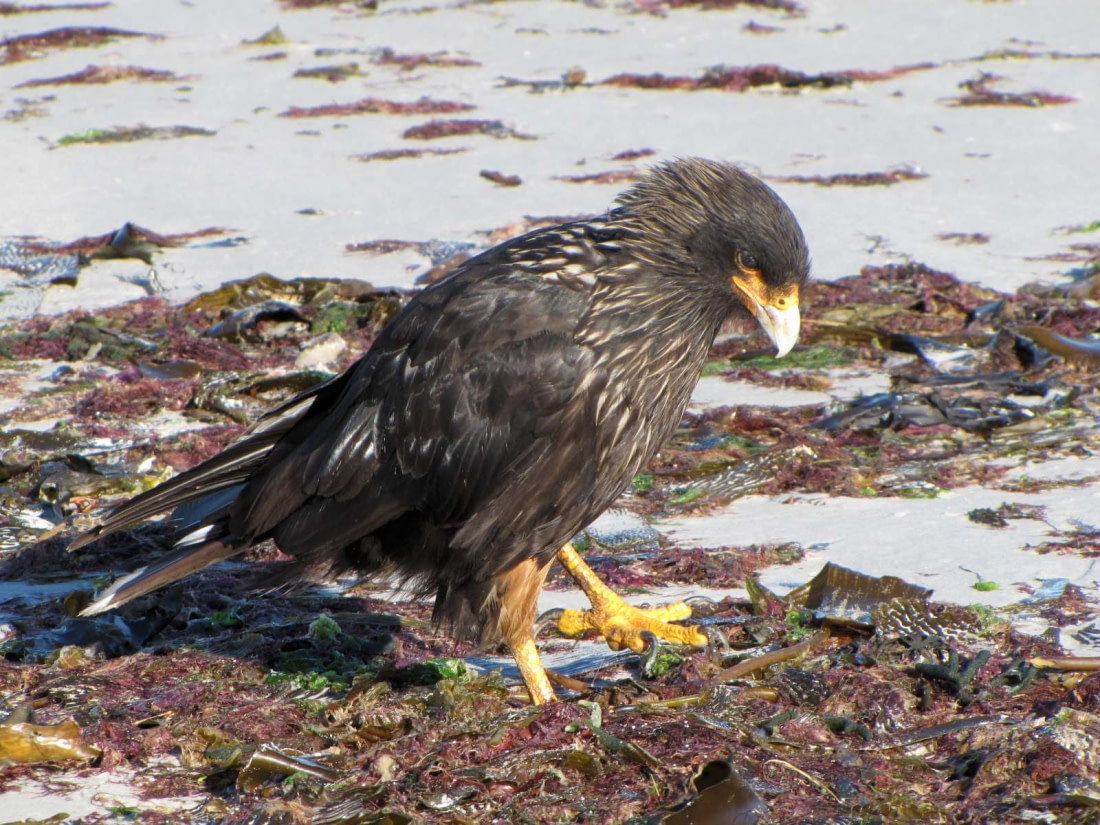
Do Striated Caracaras have any natural predators?
They have no significant natural predators. The main threat was from sheep farmers in the early 1900s, but protection laws have since been enacted.
7 Superb Striated Caracara Facts






Related Trips


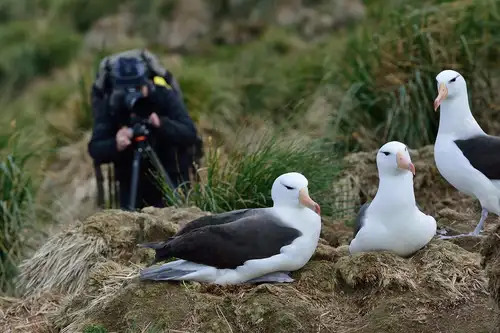
15 Falkland Islands Bird Photos




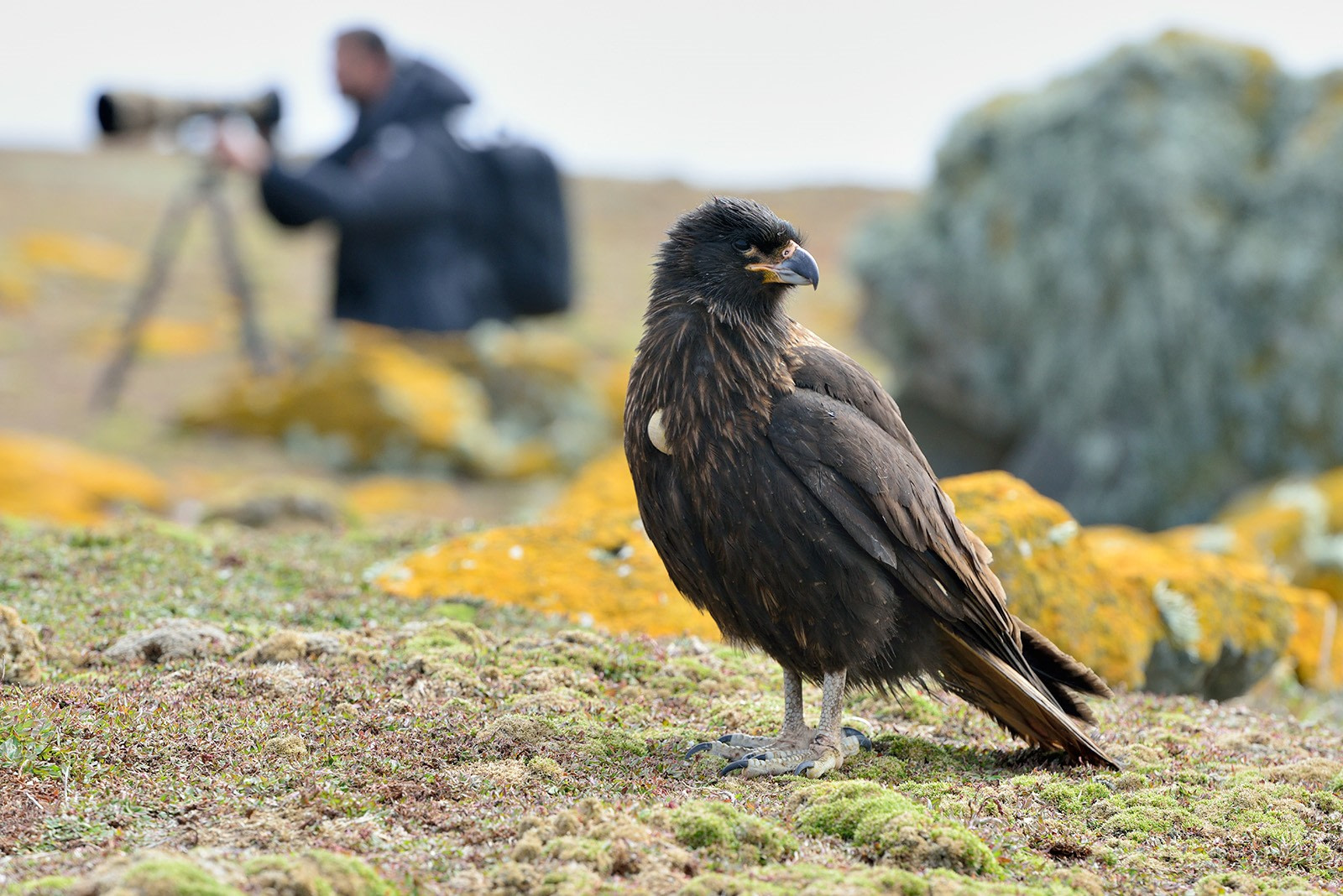

 19 Days / 18 Nights
19 Days / 18 Nights


